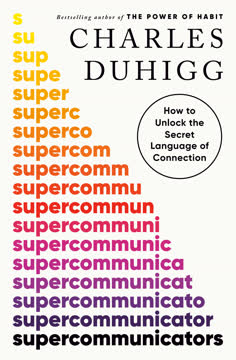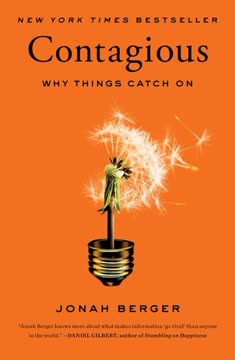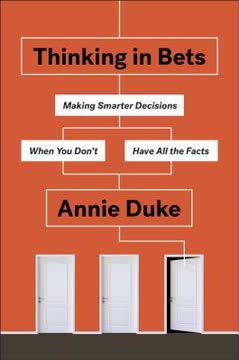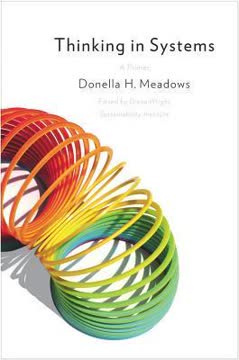Key Takeaways
1. Understanding the Nonconscious Mind: The Key to Effective Marketing
We are not rational beings influenced by emotion. Instead, we are emotional beings who hope to rationalize our behaviors after we make them.
The power of the nonconscious. Our brains make over 35,000 decisions daily, with the vast majority processed nonconsciously. This System 1 thinking is fast, automatic, and heavily influenced by emotions and context. In contrast, System 2 thinking is slow, logical, and requires effort. Marketers must tap into System 1 to create effective campaigns that resonate with consumers on a deeper level.
Breaking through the filter. In today's VUCA (Volatile, Uncertain, Complex, and Ambiguous) world, consumers are bombarded with thousands of marketing messages daily. To stand out, marketers must understand and leverage the nonconscious factors that drive human behavior. This approach allows brands to create messaging that feels natural and intuitive to consumers, increasing the likelihood of engagement and action.
2. The Four Factors of the Mindstate Behavioral Model
When you integrate all four factors from the Mindstate Behavioral Model into your messaging and creative, it will directly tap into your consumers' nonconscious.
The Mindstate Behavioral Model. This framework consists of four key factors that influence consumer behavior:
- Goals: What consumers want to achieve
- Motivations: The emotional drivers behind their goals
- Regulatory approach: How they pursue their goals (promotion vs. prevention focus)
- Cognitive heuristics: Mental shortcuts used in decision-making
Integrated approach. By understanding and incorporating these four factors into marketing strategies, brands can create more effective and persuasive messaging. This model provides a scientific basis for designing campaigns that resonate with consumers on a deeper, nonconscious level, leading to increased engagement and sales.
3. Activating Goals: The Foundation of Consumer Behavior
Goals provide a target for our decisions and actions to move toward and direction for our daily lives. When we act, it's always to move closer to a goal.
Understanding consumer goals. Goals can be functional (e.g., saving money) or higher-order (e.g., feeling like a good parent). Marketers should focus on identifying and activating higher-order goals, as these create stronger emotional connections with consumers.
Research techniques. To uncover consumers' goals, use methods such as:
- In-context research (observing behavior in natural settings)
- Storytelling and fill-in-the-blank exercises
- Projective techniques (e.g., image sorting, collage building)
- Deprivation exercises
By understanding both functional and higher-order goals, marketers can create messaging that resonates more deeply with consumers and drives action.
4. Priming Motivations: The Emotional Engine of Decision-Making
Motivations drive people at a deep emotional level. Understanding people's true motivations will help you shift people from intending to act into actually acting.
The nine core motivations. These universal drivers of human behavior are:
- Achievement
- Autonomy
- Belonging
- Competence
- Empowerment
- Engagement
- Esteem
- Nurturance
- Security
Identifying and leveraging motivations. To uncover consumers' primary motivations, use techniques such as:
- Image sorting exercises
- Storytelling
- Role-playing scenarios
By aligning marketing messages with consumers' core motivations, brands can create stronger emotional connections and increase the likelihood of action.
5. Framing Choices: Aligning with Consumers' Regulatory Focus
When you connect with their higher-order goals, you can evoke a lot of emotion in consumers.
Regulatory focus theory. This concept explains how people approach goals:
- Promotion focus: Seeking positive outcomes and maximizing gains
- Prevention focus: Avoiding negative outcomes and minimizing losses
Framing strategies. Align your messaging with consumers' regulatory focus:
- Promotion focus: Emphasize benefits, growth, and opportunities
- Prevention focus: Highlight safety, security, and risk avoidance
By framing choices in a way that matches consumers' natural regulatory focus, marketers can make their messages feel more intuitive and compelling.
6. Triggering Behavior: Leveraging Cognitive Heuristics
Cognitive heuristics completes the fourth stage of the Mindstate Behavioral Model. So far, we've learned how to activate a consumer's goal, we've primed his motivation, and we've framed his choice in a way that matches his regulatory fit and focus. At this point, we should have created a psychological hot state in our customer and he wants to act.
Understanding heuristics. Cognitive heuristics are mental shortcuts that people use to make decisions quickly and easily. Some common heuristics include:
- Scarcity effect
- Social proof
- Anchoring
- Loss aversion
- Availability bias
Applying heuristics in marketing. By incorporating relevant heuristics into marketing messages, brands can:
- Make decision-making feel more natural and intuitive
- Reduce cognitive effort required from consumers
- Increase the likelihood of immediate action
Identify the key heuristics used by your target audience and incorporate them into your messaging to trigger desired behaviors.
7. The Eighteen Mindstates: A Framework for Targeted Marketing
A mindstate is a temporary state of mind when a person shifts from rational to emotionally intuitive decision making.
Understanding mindstates. The eighteen mindstates are created by combining the nine core motivations with the two regulatory approaches (promotion and prevention). Examples include:
- Optimistic Achievement
- Cautious Belonging
- Optimistic Nurturance
- Cautious Security
Mindstate profiles. Each mindstate has a unique profile that includes:
- Characteristics and desires
- Goals to activate
- Motivations to prime
- Approach to frame
- Triggers to consider
- Feelings to evoke
By identifying the relevant mindstates for their target audience, marketers can create more targeted and effective messaging that resonates on a deeper level.
8. Applying the Mindstate Behavioral Model to Real-World Marketing
Your job as a marketer is to use messaging and experiences to increase your consumer's emotional arousal, and you need to do that. But most importantly, you need to engage them in a way that triggers an actual behavior.
Implementation process:
- Conduct research to identify consumer goals, motivations, and regulatory focus
- Determine the relevant mindstate(s) for your target audience
- Use the mindstate profile to guide creative development
- Incorporate relevant heuristics to trigger desired behaviors
- Test and refine messaging based on behavioral outcomes
Balancing art and science. While the Mindstate Behavioral Model provides a scientific framework, it's essential to maintain creativity and brand identity. Use the model as a guide to refine and enhance your marketing efforts, rather than as a rigid formula.
By integrating behavioral science into marketing strategies, brands can create more effective, emotionally engaging campaigns that drive real business results.
Last updated:
FAQ
What's "Marketing to Mindstates" about?
- Behavioral Science in Marketing: "Marketing to Mindstates" by Will Leach is a guide on applying behavioral science to marketing and research. It focuses on understanding and influencing consumer behavior through nonconscious mindstates.
- Mindstate Behavioral Model: The book introduces the Mindstate Behavioral Model, which integrates four social sciences to understand the nonconscious factors driving human behavior.
- Practical Application: It provides actionable tactics for marketers to design creative messaging that emotionally connects with consumers, driving them to choose a brand.
- Field Guide Approach: Unlike academic texts, this book is a practical field guide aimed at solving real business problems using behavioral science.
Why should I read "Marketing to Mindstates"?
- Improve Marketing Effectiveness: The book offers insights into making marketing messages more effective by tapping into consumers' emotional mindstates.
- Understand Consumer Behavior: It helps marketers understand the nonconscious drivers of consumer decisions, which are often overlooked in traditional marketing.
- Actionable Strategies: Readers gain access to practical strategies and tactics that can be immediately applied to improve marketing ROI.
- Behavioral Science Simplified: The book simplifies complex behavioral science concepts, making them accessible and applicable for marketers at any level.
What are the key takeaways of "Marketing to Mindstates"?
- Nonconscious Decision Making: Most consumer decisions are made nonconsciously, influenced by emotional mindstates rather than rational thought.
- Mindstate Activation: Marketers can activate specific mindstates by aligning their messaging with consumers' goals, motivations, and regulatory focus.
- Behavior Design: Applying behavior design principles can make marketing messages more persuasive and effective.
- Eighteen Mindstates: The book identifies eighteen unique mindstates that marketers can target to influence consumer behavior.
How does the Mindstate Behavioral Model work?
- Four Key Factors: The model incorporates goals, motivations, regulatory approach, and cognitive heuristics to understand consumer behavior.
- Mindstate Profiles: It identifies eighteen mindstates based on combinations of motivations and regulatory focus, providing a framework for targeted marketing.
- Behavioral Activation Briefs: These briefs offer specific strategies and tactics for each mindstate, guiding marketers in crafting effective messages.
- Practical Application: The model is designed to be used in real-world marketing scenarios, helping brands connect with consumers on a deeper level.
What is behavior design according to Will Leach?
- Definition: Behavior design is the process of applying neurological and behavioral insights to influence consumer behavior through marketing.
- Consumer Interactions: It involves designing customer interactions that psychologically influence and change behavior.
- Science and Art: Behavior design combines scientific principles with creative marketing to emotionally engage consumers.
- Practical Examples: The book provides examples of behavior design in action, such as using cognitive heuristics to make decisions easier for consumers.
What are the nine core human motivations in "Marketing to Mindstates"?
- Achievement: The desire to feel successful and proud by overcoming obstacles.
- Autonomy: The need for independence and self-determination in actions.
- Belonging: The drive to feel aligned and connected with others.
- Competence: The motivation to feel capable and skilled in activities.
- Empowerment: The feeling of being authorized and equipped to act on choices.
- Engagement: The desire for ongoing excitement and interest in activities.
- Esteem: The need for approval, respect, and admiration from others.
- Nurturance: The feeling of being appreciated and the ability to care for others.
- Security: The need to feel safe and protected from threats.
How can marketers apply the Mindstate Behavioral Model?
- Identify Consumer Mindstates: Use research to determine which of the eighteen mindstates your target consumers are in during decision-making moments.
- Align Messaging: Craft marketing messages that align with the identified mindstate, focusing on the consumer's goals, motivations, and regulatory focus.
- Use Behavioral Activation Briefs: Follow the specific strategies and tactics outlined in the briefs to optimize marketing efforts.
- Test and Refine: Continuously test and refine marketing strategies to ensure they effectively engage consumers in their mindstates.
What are some examples of cognitive heuristics in marketing?
- Scarcity Effect: Consumers place more value on items perceived as scarce, prompting immediate action.
- Loss Aversion: People avoid losing things they feel ownership over, influencing purchasing decisions.
- Social Proof: Consumers are more likely to buy products perceived as popular among large groups.
- Anchoring: The first option presented often serves as a reference point for evaluating other options.
What are the best quotes from "Marketing to Mindstates" and what do they mean?
- "To change minds, you must first change the state of mind." This quote emphasizes the importance of understanding and influencing consumers' emotional mindstates to drive behavior change.
- "We don’t think as much as we think we think." It highlights the nonconscious nature of most consumer decisions, which are driven by emotions rather than rational thought.
- "Behavior design is part intuition, part artistry, and part science." This quote underscores the blend of creativity and scientific principles in crafting effective marketing messages.
- "The future of marketing is a blend of art and science." It suggests that successful marketing requires integrating behavioral science with creative strategies.
How does "Marketing to Mindstates" differ from traditional marketing approaches?
- Focus on Nonconscious: Unlike traditional marketing, which often targets rational decision-making, this book focuses on nonconscious, emotional drivers.
- Behavioral Science Integration: It integrates behavioral science principles into marketing strategies, offering a more scientific approach to influencing consumer behavior.
- Practical Field Guide: The book provides actionable tactics and real-world examples, making it a practical guide for marketers rather than a theoretical text.
- Mindstate Targeting: It introduces the concept of targeting specific mindstates, allowing for more personalized and effective marketing messages.
What is the role of regulatory focus in the Mindstate Behavioral Model?
- Promotion vs. Prevention: Regulatory focus refers to whether consumers approach goals with a promotion (seeking gains) or prevention (avoiding losses) mindset.
- Framing Messages: Understanding regulatory focus helps marketers frame messages in a way that aligns with consumers' natural decision-making strategies.
- Influence on Behavior: Aligning marketing messages with the appropriate regulatory focus can make them feel more natural and relatable to consumers.
- Strategic Application: The book provides strategies for identifying and applying regulatory focus in marketing efforts to enhance message effectiveness.
How can marketers identify consumer mindstates?
- Conduct Research: Use behavioral research methods to understand consumers' goals, motivations, and regulatory focus in decision-making contexts.
- Observe Behavior: Pay attention to consumer behavior in real-world settings to identify nonconscious drivers and mindstates.
- Use Mindstate Profiles: Refer to the mindstate profiles provided in the book to gain insights into consumers' psychological characteristics and decision-making processes.
- Test and Validate: Continuously test marketing strategies and validate them against consumer mindstates to ensure alignment and effectiveness.
Review Summary
Marketing to Mindstates receives mixed reviews, with ratings ranging from 1 to 5 stars. Positive reviews praise its practical approach to behavioral science in marketing, easy-to-understand framework, and useful tools for strategists. Critics argue it lacks scientific backing and originality, calling it an oversimplification of established concepts. Some readers find it repetitive or basic, while others appreciate its accessibility for those new to behavioral economics. The book's application of psychology and neuroscience to marketing is both lauded and criticized, with opinions divided on its value and originality.
Similar Books










Download PDF
Download EPUB
.epub digital book format is ideal for reading ebooks on phones, tablets, and e-readers.




